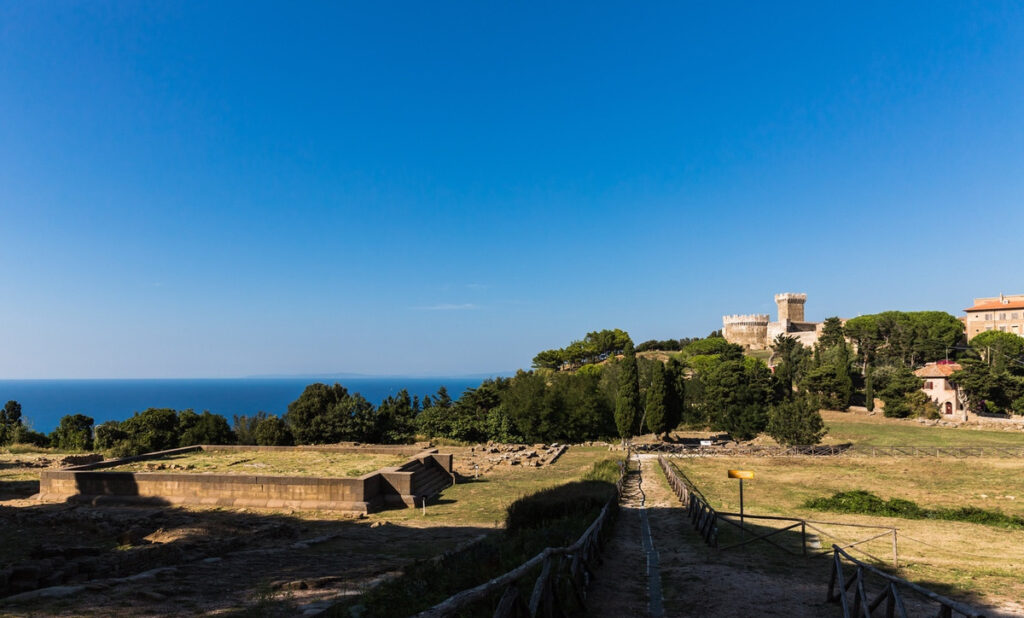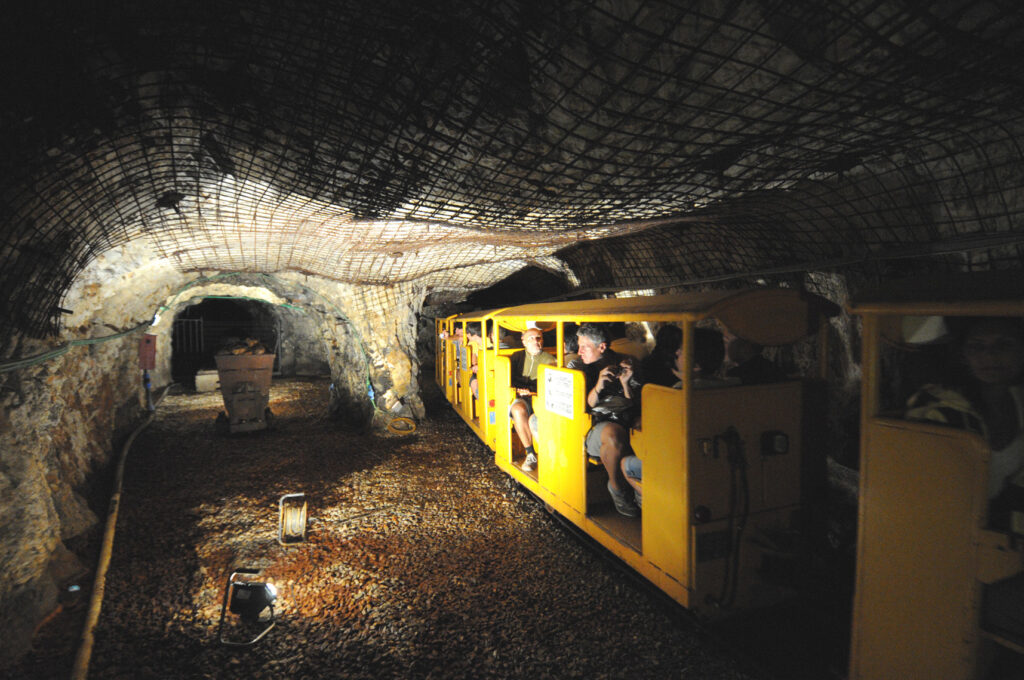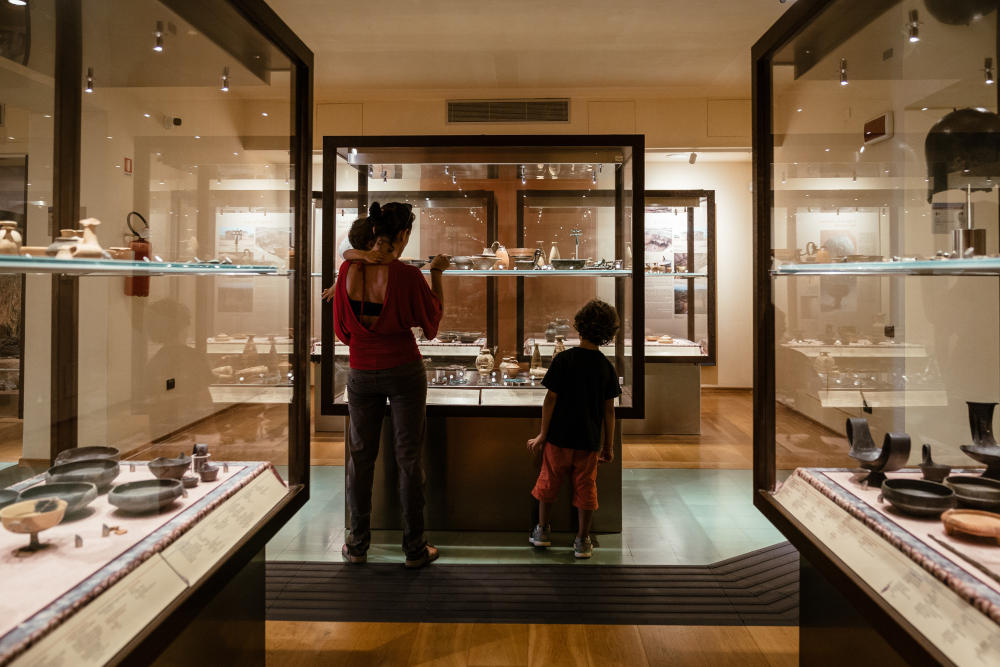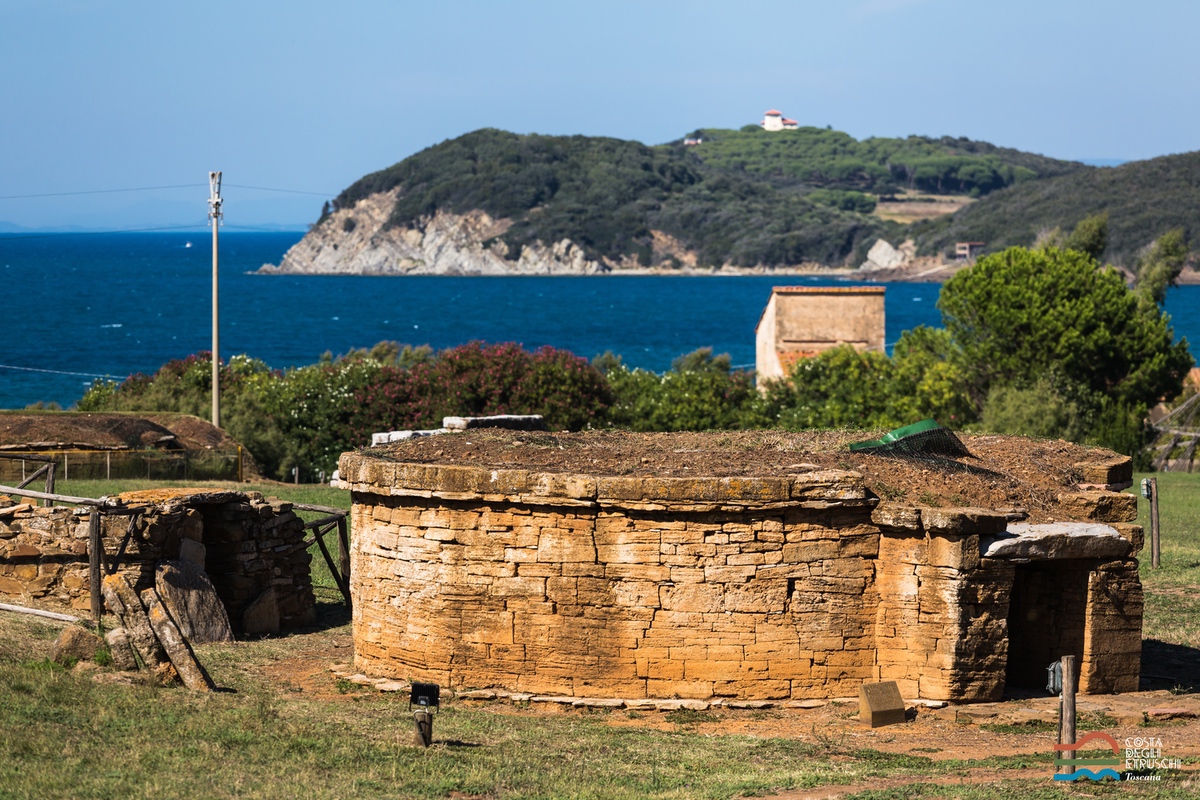In the footsteps of the Etruscans: among archaeological treasures surrounded by nature
On the Etruscan Coast, thousands of years of history can be experienced in vast natural areas, archaeological parks and museums.
Testimonies of arts and crafts, cities and necropolises kept in all their splendour in archaeological parks surrounded by the Mediterranean maquis. It is not difficult to imagine where the Etruscan Coast takes its name. Here, back in the 9th century BC, an advanced society developed, in which women enjoyed independence and equal rights like in no other ancient civilisation; therapies focused on well-being, as evidenced by the numerous practices that have come down to us and which can still be found in the wonderful thermal baths and spas. Similarly, the cities of the dead tell of Etruscans’ worship of the deceased and care for their loved ones, of which numerous finds remain today. The extent and importance of these finds throughout the coastal and inland areas have led, over the years, to greater understanding of how this people lived and hence the evocative name of “Costa degli Etruschi”.
The perfect way to journey back in time and experience the past is to visit the well-preserved archaeological areas that adorn the Etruscan Coast. Traces of this ancient people can still be found in the municipalities of the Pisan hills and down to the southern outposts that dominated the Tyrrhenian Sea. Long walks among the ancient burial mounds and remains in contact with the earth and the Mediterranean maquis combine the discovery of history with the satisfaction of outdoor trekking and the fragrant sea breeze from the Tyrrhenian Sea. The network of Val di Cornia Parks guarantees the protection of this prized area and includes archaeological parks, nature reserves and museums.

The splendour of the Archaeological Park of Baratti and Populonia
The Archaeological Park of Baratti and Populonia, between the towns of Piombino and San Vincenzo, is a natural oasis cloaked in history. Numerous footpaths through the Mediterranean maquis with glimpses of the open sea enable the complete discovery of the park. The ancient roads with their original cobblestones that have stood the test of time join the necropolis, in the lower part, to the Acropolis of Populonia, overlooking the inviting blue waters of the Gulf of Baratti and the only settlement built by the sea. It is in the thousand-year-old cities of the dead that unique buildings can be admired, such as the Necropolis of San Cerbone, where monumental tombs of undisputed fascination, including the tumulus called “Tomba dei Carri” with its remarkable 28 m diameter, are preserved. Equally important is the Necropolis della Grotte, where the chamber tombs carved into the rock seem to decorate the walls, like windows looking onto another time. Both archaeological sites can be visited independently or, to get an even greater insight into the customs of this people, with a guide.

The underground fascination of the Archaeological-Mining Park
The perfect counterpart to the treasures on the surface, below ground on the Etruscan Coast is evidence of an undoubtedly more recent past, but of no lesser value. The Archaeological-Mining Park of San Silvestro in Campiglia Marittima is part of the network of Val di Cornia Parks and develops around the riches of the subsoil and the life of the miners; the descent into the galleries on board the little yellow train is one of the most popular experiences in the park for both adults and children and a great family holiday activity. However, mining does not only concern modern times. Near to Campiglia Marittima, the earth has brought to light the signs of the Etruscan people, who probably lived here because of the wealth of minerals. The Etruscans knew the value of metals and were skilled craftsmen with different materials (iron, copper, silver) and decorative techniques; their tools, beautiful jewels, votive statues and other ornamental objects have come down to us and a road in their name is recognition of their influence.
Along the Via degli Etruschi
The Via degli Etruschi, also known as the Via del Ferro after the ancient iron “foundries”, is a long coast-to-coast route that crosses the Etruscan lands and ancient settlements from the Tyrrhenian Sea to the Adriatic: the heady mix of sea, Mediterranean maquis and fortified villages, with towers soaring into the sky, will surely captivate lovers of trekking and long outdoor walks.

Three Archaeological Museums
Enthusiasts of museum itineraries will discover that the old towns have many enticing exhibits. For those hungry for culture, the Palazzo Bombardieri Civic Archaeological Museum, in Rosignano Marittimo, is housed inside a medieval fortress and amazes right from the entrance. The museum illustrates, with a full and well-structured itinerary, the development of the local area, the possession of which was disputed by rival cities for centuries. Villa Guerrazzi, in the hamlet of San Pietro a Palazzi near Cecina, is home to the “La Cinquantina” Archaeological Museum, where the beautiful funerary objects are only part of the remarkable evidence that shows how the Etruscans occupied the entire area from Volterra up to Piombino: villages such as Bibbona and Casale Marittimo have been the sites of numerous finds over the years. In Populonia, a little gem is the Etruscan Museum of Populonia – Gasparri Collection, the oldest museum institution in the area, which houses a private collection of great value in the historic building. Finally, in the old town of Piombino, the Archaeological Museum of the Territory of Populonia illustrates the history of the area through finds; the multi-sensory itinerary, designed to suit the needs of people with disabilities, is suitable for everyone and makes the museum itinerary engaging and fun for children too.
To find out more:
Archaeological Park of Baratti and Populonia
Archaeological-Mining Park of San Silvestro
Archaeological Museum of the Territory of Populonia
Palazzo Bombardieri Civic Archaeological Museum in Rosignano Marittimo
